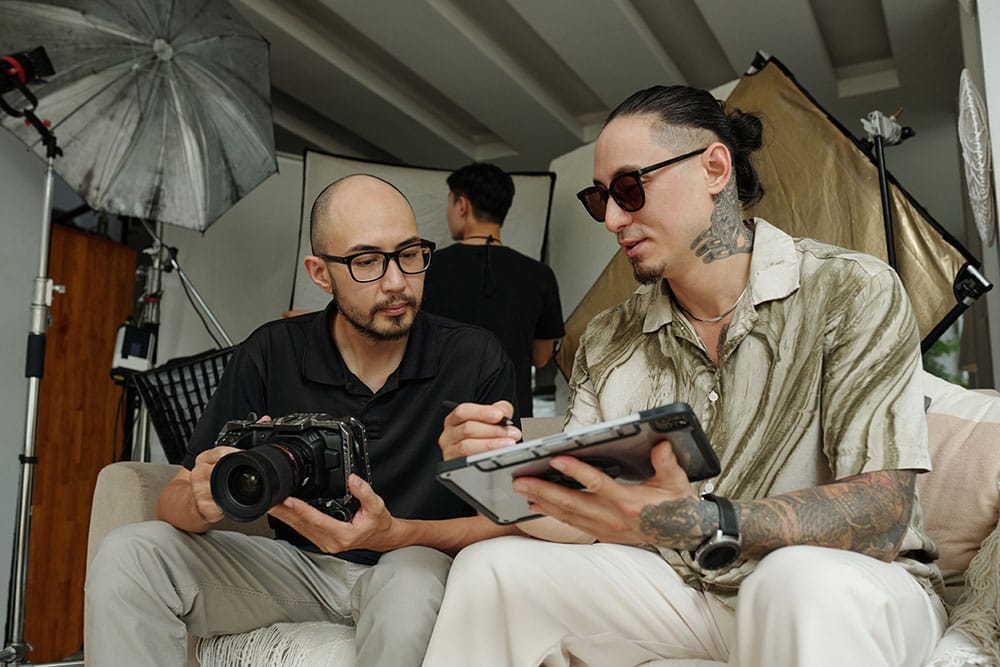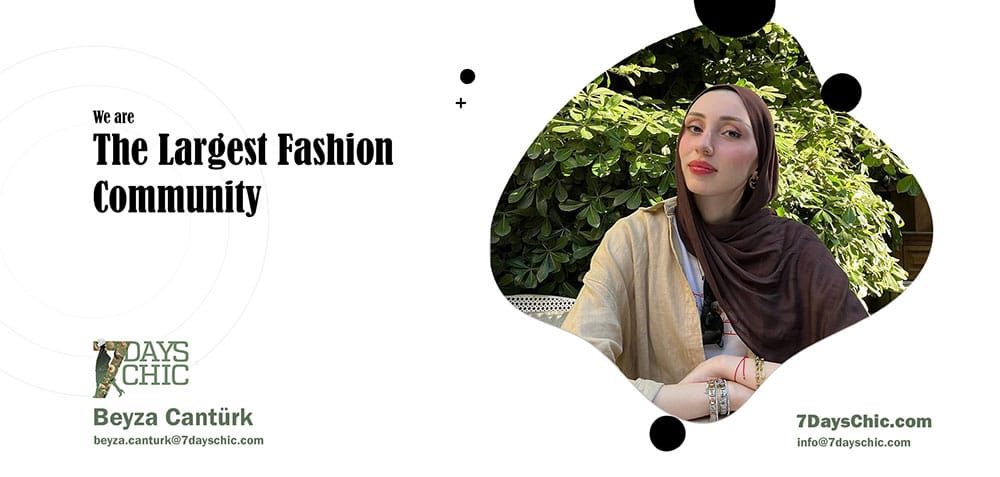Brand-Owned Platforms
Brand-owned platforms are digital spaces controlled and curated entirely by the brand, allowing for deeper and more exclusive interactions with community members. These platforms can help build a strong, direct relationship between the brand and its most loyal fans.
1. Exclusive Membership Programs:
Creating a membership or loyalty program allows customers to feel valued and part of an exclusive group. These programs often provide benefits such as early access to products, special discounts, and members-only content.
- Key Features: Special discounts, early product releases, exclusive content.
- Engagement Tactics: Offering members-only collections, exclusive content, and personalized shopping experiences.
2. Community Apps:
Brand-owned community apps provide a more controlled environment for fostering engagement and building brand loyalty. These apps can include features like direct messaging, exclusive news, early product drops, and custom shopping experiences.
- Key Features: Direct interaction, curated content, early access to collections.
- Engagement Tactics: Integrating social features, product discovery tools, and exclusive notifications.
3. Brand Forums:
Online forums are a great way to create a space for discussionA successful personal brand isn’t just about showcasing who you are; it’s also about understanding and engaging with the community you’re building. Your individuality is what makes you unique, but aligning that individuality with the interests, values, and aspirations of your community is what makes your brand resonate with others. It’s essential to find a balance between standing out and being relevant to the group you’re engaging with. This section delves into how to showcase your personal style while remaining connected to the broader conversations happening within your community.
4. Finding Your Unique Voice While Reflecting Community Values
One of the most powerful aspects of personal branding is the ability to express your unique voice. However, to build a strong and cohesive community, your voice must resonate with your audience’s interests and needs. Understanding the values, desires, and pain points of your community allows you to create content that is not only reflective of your personal style but also meaningful to those who follow you. This section will explore how to find your voice and adapt it in a way that resonates with your audience’s values while still showcasing your individuality.
5. Navigating Trends While Maintaining Personal Identity
Being part of a community often involves engaging with shared trends, conversations, and challenges. However, it’s important to engage with trends in a way that doesn’t compromise your personal style or brand identity. Trends come and go, but your individuality is what will set you apart long-term. This sub-section discusses how to incorporate current trends into your personal brand without losing sight of what makes you unique. Whether it’s adopting a trending aesthetic or participating in popular challenges, maintaining authenticity ensures that you remain relevant while staying true to your cos, customer feedback, and building community knowledge. Fashion brands can use forums to solicit feedback on new designs, engage in discussions with their audience, and showcase user-generated content.
- Key Features: Discussion threads, customer feedback, brand communication.
- Engagement Tactics: Hosting Q&A sessions, organizing user-driven content, or gathering insights from dedicated forum members.
4. Content Strategies for Building Engagement

Content is the backbone of any effective digital strategy. In the fashion industry, brands must create content that resonates with their target audience, communicates their values, and builds genuine engagement. The right content strategy can transform casual followers into loyal brand advocates and build an emotional connection that drives long-term success.
This section focuses on key content strategies for fashion brands to engage with their communities. These strategies include storytelling, behind-the-scenes content, user-generated content, interactive content, and live streams. Each of these strategies has the potential to engage your community, increase brand awareness, and inspire loyalty.
Storytelling in Fashion: Creating Narratives that Connect Emotionally
Fashion is not just about clothes—it’s about the story behind them. Consumers today are increasingly looking for brands that not only sell products but also convey a meaningful story or vision. Fashion storytelling has the power to form deep emotional connections with your audience, making them feel a part of something larger than just a transaction.
- What is Storytelling in Fashion? Fashion storytelling involves crafting narratives that go beyond the product to focus on the inspiration, values, and vision behind a brand or collection. These narratives can be shared through various content formats such as videos, blogs, interviews, and social media posts. Storytelling humanizes a brand and adds depth to its offerings, which can foster emotional connections with the audience.
- How to Incorporate Storytelling in Fashion Content: Incorporating storytelling in fashion content involves highlighting the inspiration, emotions, and cultural context behind a collection to engage the audience beyond visuals
- Brand Origin Stories – Share how the brand was founded and what inspired its creation. Focus on the journey, values, and mission that led to the brand’s existence.
- Design Inspirations – Highlight the stories behind specific collections or designs. Share where the ideas came from, whether from historical references, cultural influences, or personal experiences.
- Customer Stories – Feature stories from loyal customers who share how the brand has impacted their lives. This creates an emotional connection and shows the brand’s influence beyond just a product.
- Sustainability & Social Impact – If your brand is committed to sustainability, diversity, or social causes, make this a central part of your storytelling. Tell the story of how your company is making a difference in the world.
- Benefits of Storytelling: Storytelling in fashion builds emotional connections, strengthens brand identity, and enhances engagement, making content more memorable and fostering customer loyalty.
- Emotional Connection: Consumers are more likely to buy from a brand they feel emotionally connected to.
- Brand Loyalty: A compelling story can build trust and make your audience feel like they’re a part of your brand’s journey.
- Differentiation: In a saturated market, storytelling helps a brand stand out and offer something beyond just a product.
5. Behind-the-Scenes Content: Showcasing the Creative Process and Brand Values

Behind-the-scenes (BTS) content gives your audience an inside look at the brand’s creative process, values, and people. Sharing how products are made, the people behind the brand, and the day-to-day operations can create a sense of transparency and intimacy.
- What is Behind-the-Scenes Content? BTS content provides followers with a glimpse into the inner workings of your brand. It can be anything from showing how your fashion collections are designed and created to sharing photos and videos of the team at work. It humanizes the brand, making it more relatable and authentic.
- How to Create Effective Behind-the-Scenes Content: To create effective behind-the-scenes content, showcase authentic moments, highlight the creative process, and give audiences an insider’s view that makes them feel connected to the brand’s journey.
- Design Process: Show how sketches and concepts evolve into final products. Share mood boards, fabric selection, and decision-making processes.
- Team Introductions: Highlight your team members and their roles in creating the brand. Share their personal stories, passions, and expertise.
- Product Development: Share how the clothing is made, where it’s sourced, and any sustainability pracnique opportunity for your community to engage in real-time. The key to a successful virtual event is making it interactive—encouraging participants to ask questions, share their thoughts, or vote on topics. This engagement keeps the event dynamic and creates an inclusive experience where everyone feels connected. This sub-section explores how to plan, promote, and execute virtual events that bring your community together.
1. Running Giveaways to Spark Excitement and Participation
Giveaways are a proven way to generate buzz and increase engagement within your community. By offering a valuable prize or exclusive access to your products or services, you can incentivize followers to interact with your content—whether by commenting, tagging friends, or sharing posts. The excitement surrounding a giveaway often encourages people to participate who may not have engaged before. Additionally, giveaways help to increase brand visibility as people share and talk about the contest. This section will dive into how to structure and execute giveaways that not only generate excitement but also build lasting engagement within your community.
Creating Discussion Topics That Spark Meaningful Engagement
Creating engaging discussion topics is one of the most effective ways to encourage participation in your community. When you start a conversation that resonates with your audience, you open the door for followers to share their opinions, experiences, and feedback. By encouraging thoughtful discussions around topics related to your niche or topics involved in production.
- Fashion Shoots: Take your audience behind the scenes of photoshoots or runway shows. Show the real, unpolished moments that go into creating a flawless presentation.
- Day-in-the-Life: Show a typical day at the office or in a design studio. Highlight meetings, brainstorming sessions, and team collaborations.
Benefits of Behind-the-Scenes Content:
Behind-the-scenes content builds authenticity, fosters a sense of transparency, strengthens audience trust, and deepens engagement by offering a more personal connection to the brand.
- Authenticity & Transparency: Brands that share their process are perceived as more transparent, which builds trust.
- Relatability: Showing the human side of your brand helps to create a more personal connection with your followers.
- Increased Engagement: People love to feel like insiders. BTS content can encourage comments, shares, and even reposts as followers feel like they’re part of the process
User-Generated Content (UGC): Encouraging Followers to Share Their Fashion Styles
User-generated content (UGC) is one of the most powerful forms of social proof in the fashion industry. When followers share their personal experiences, they are not only promoting your brand but also building a community around it. UGC fosters engagement, increases brand credibility, and encourages other customers to join in.
- What is User-Generated Content? UGC refers to any content—images, videos, or reviews—that is created by customers or fans of the brand. It can include photos of customers wearing your designs, reviews, or any other form of content shared on social media platforms, often with brand hashtags.
- How to Encourage User-Generated Content: Encourage user-generated content by creating interactive campaigns, offering incentives, and making it easy for followers to share their own experiences with your brand.
- Create Brand-Specific Hashtags: Encourage followers to share photos of themselves wearing your products by creating a unique hashtag (e.g., #MyBrandStyle). Repost UGC on your own social media platforms.
- Host UGC Contests or Challenges: Encourage users to submit their own fashion looks for a chance to win prizes or get featured on your brand’s social media pages.
- Share Customer Stories: Post customer testimonials, reviews, and photos on your website and social media to show how real people interact with your products.
- Feature UGC on Your Website: Create a section on your website where customers can submit their photos to be featured, building a community of brand advocates.
Benefits of User-Generated Content:
User-generated content boosts brand credibility, increases engagement, and fosters a sense of community, as it highlights authentic customer experiences and recommendations.
- Authenticity & Trust: UGC is seen as more authentic and relatable than brand-generated content. When potential customers see others enjoying your products, they’re more likely to trust your brand.
- Social Proof: UGC builds credibility, showing that real people love and wear your products.
- Community Building: Encouraging your customers to participate fosters a sense of belonging and strengthens their relationship with your brand.

Interactive Content: Polls, Q&As, Challenges, and Contests
Interactive content is one of the most engaging ways to build a relationship with your fashion community. It invites users to actively participate rather than passively consume content, making the engagement feel more personal and rewarding.
- What is Interactive Content? Interactive content includes polls, quizzes, Q&A sessions, challenges, and contests that encourage audience participation. It provides a more dynamic experience for users, making them feel more connected to the brand.
- How to Create Interactive Content: Create interactive content by incorporating polls, quizzes, surveys, and engaging calls-to-action that encourage active participation and feedback from your audience.
- Polls & Surveys: Ask your audience for their opinions on new designs, color options, or trends. Platforms like Instagram and Twitter make it easy to host polls that engage your followers.
- Q&A Sessions: Host live Q&A sessions with designers, models, or influencers. Answer questions about fashion trends, style tips, or your brand’s story.
- Challenges & Hashtag Campaigns: Launch fashion challenges that encourage followers to share their looks or participate in themed fashion events. Use hashtags to track entries and increase visibility.
- Contests & Giveaways: Run contests where users can submit their fashion photos for a chance to win exclusive prizes. This can encourage user-generated content while providing exposure to the brand.
Benefits of Interactive Content:
Interactive content boosts engagement, enhances user experience, encourages sharing, and provides valuable insights into audience preferences and behaviors.
- Enhanced Engagement: Interactive content is more engaging, encouraging users to actively participate in brand-related conversations.
- Valuable Feedback: Polls and surveys provide direct insights from your audience about preferences, needs, and trends.
- Brand Awareness: Contests, challenges, and Q&A sessions can significantly increase your reach, especially when participants share content with their followers.
Live Streams & Webinars: Real-Time Engagement with Designers, Models, and Fans
Live streaming is one of the most powerful tools for real-time engagement with your community. It allows fashion brands to connect with their audience instantly, share important updates, and even launch products in a more personal and interactive way.
- What are Live Streams & Webinars? Live streams allow brands to broadcast real-time events, such as fashion shows, product launches, or interviews. Webinars are structured, often educational events where brands can share insights about fashion trends, sustainability, or brand vision.
- How to Use Live Streams & Webinars: Use live streams and webinars to connect with your audience in real-time, share valuable insights, showcase products, and answer questions, creating an interactive and engaging experience.
- Product Launches & Showcases: Use live streaming to unveil new collections, allowing viewers to experience the launch as it happens.
- Interviews & Panels: Host interviews with designers, influencers, or models to provide exclusive insights into the fashion industry.
- Virtual Fashion Shows: Given the global nature of fashion, virtual runway shows via live streams allow brands to showcase their collections to a worldwide audience.
- Fashion Webinars: Host educational sessions that discuss various aspects of fashion, from styling tips to industry trends, fostering a more knowledgeable community.
Benefits of Live Streams & Webinars:
Live streams and webinars offer real-time interaction, build trust, allow for immediate feedback, and create a sense of exclusivity, fostering deeper connections with the audience.
- Real-Time Engagement: Live streams and webinars create a sense of immediacy, encouraging people to tune in and participate while the event is happening.
- Personal Connection: Live interactions build a stronger connection with followers, as they can ask questions or comment directly during the event.
- Extended Reach: Events hosted online can reach a global audience, making it easier to connect with fans and followers across different time zones.
6. The Role of Influencers & Brand Ambassadors

Influencers and brand ambassadors play a crucial role in shaping the perception and reach of fashion brands. By collaborating with individuals who have established trust and a loyal following, brands can authentically promote their products and values to a wider audience. Influencers offer relatable, personal experiences that resonate with their followers, while brand ambassadors help build long-term relationships and a sense of community around a brand. Both play pivotal roles in increasing brand visibility, driving engagement, and enhancing credibility, ultimately fostering deeper connections with target audiences.
Understanding Influencers and Brand Ambassadors
Influencers and brand ambassadors both play pivotal roles in modern marketing, but they serve different purposes. Influencers are individuals who have built a strong online presence and following on social media platforms. They can sway their followers’ opinions and purchasing behaviors with their authentic and relatable content. Brand ambassadors, on the other hand, are individuals who are closely associated with a brand and typically represent the company for a long period of time. They are often seen as trustworthy, loyal figures who help build consistent brand recognition.
This section explores the differences between influencers and brand ambassadors, as well as how each contributes to building brand awareness and loyalty. While influencers are usually part of a short-term campaign, brand ambassadors create long-term relationships and help establish a deeper connection with the brand.
1. Key Differences Between Influencers and Brand Ambassadors
Influencers tend to have a more dynamic and flexible relationship with brands. They are often chosen for one-time collaborations and campaigns that last for weeks or months. The influencer’s role is to create content that resonates with their audience, which may include product placements, sponsored posts, or reviews. In contrast, brand ambassadors are typically involved in a longer-term partnership with a brand, where they represent the company across multiple campaigns and touchpoints. Their role often extends to being the public face of the brand, attending events, and endorsing products in a continuous and consistent manner.
2. Why Brand Ambassadors Create Stronger Brand Loyalty
Brand ambassadors are often viewed as more authentic than influencers because they have a deeper and more personal connection to the brand. Their long-term commitment allows them to form a genuine relationship with the brand’s products or services, which they consistently advocate for in their personal and professional lives. This ongoing relationship helps to build trust with consumers, as brand ambassadors act as credible, reliable sources of information.
How Influencers Drive Authentic Engagement
Influencers are able to drive engagement by creating a personal connection with their followers. Unlike traditional advertisements, influencer marketing relies on trust. Audiences often feel they are getting advice from a friend or someone they admire, making the product or service recommendation feel more organic. This authenticity in engagement is crucial in modern digital marketing, where consumers are increasingly skeptical of overtly promotional content.
1. The Power of Relatability
Influencers are relatable because they often share similar experiences, lifestyles, and interests with their followers. Their content, whether it’s through stories, blog posts, or videos, is more about sharing real-life experiences than purely selling products. This relatability allows for an organic conversation around the brand, as consumers feel like they are being spoken to directly rather than being marketed to.
2. Trust and Transparency in Influencer Relationships
Building trust is central to successful influencer marketing. Audiences are more likely to believe an influencer’s recommendation if they feel the influencer is transparent about their partnerships. For this reason, many influencers disclose paid partnerships or sponsored content, which helps maintain their authenticity. Transparent relationships with followers foster loyalty and genuine engagement.
The Impact of Social Media on Influencer Marketing
Social media has revolutionized the influencer marketing landscape by providing platforms where influencers can interact directly with their audiences. Instagram, TikTok, and YouTube are just a few of the platforms that allow influencers to engage with their followers in real-time, making it easier for them to build communities and trust. The reach of social media also allows for content to go viral, providing opportunities for brands to gain massive exposure in a short amount of time.
1. How Platforms Shape Influencer Marketing
Each social media platform offers a unique set of tools for influencer marketing. For instance, Instagram’s visual focus makes it ideal for showcasing lifestyle products, while YouTube’s longer-form videos allow influencers to offer in-depth product reviews and tutorials. TikTok’s short, engaging videos allow influencers to capitalize on trends and challenges, driving rapid user interaction. Understanding how each platform works is essential for brands when choosing influencers for campaigns.
2. The Role of Algorithms in Influencer Reach
Social media platforms use algorithms to determine what content appears in a user’s feed, which can affect the visibility of influencer content. Algorithms prioritize content that generates engagement, meaning that influencers who have a high engagement rate—whether through likes, comments, or shares—are more likely to have their posts seen by a wider audience. Brands must be aware of how these algorithms work to optimize their influencer campaigns.
Finding the Right Influencers for Your Brand
Choosing the right influencer is crucial to a successful marketing campaign. The ideal influencer should not only align with your brand’s values but also resonate with your target audience. It’s important to look beyond follower count and focus on engagement, content quality, and authenticity. This section discusses how to effectively evaluate and select influencers based on these criteria.
1. Identifying the Right Niche and Audience
Every brand has a specific target audience, and the influencers you choose should have a following that aligns with that audience. This includes considering factors like age, location, interests, and purchasing behaviors. Niche influencers, who have a smaller but highly engaged audience, can be particularly effective at reaching specialized groups.
2. Evaluating Influencer Engagement and Content Quality
When selecting an influencer, it’s important to assess not just their follower count but their engagement rate—how many of their followers actually interact with their content. Additionally, brands should evaluate the quality of the content itself. Does the influencer’s style fit with your brand’s messaging? Are they known for producing high-quality, visually appealing content?
The Power of Micro-Influencers in Niche Markets

Micro-influencers often have between 1,000 to 100,000 followers, but their smaller, more targeted audiences make them an attractive choice for brands looking to connect with specific niches. Micro-influencers tend to have higher engagement rates than larger influencers, and their content is often seen as more relatable and authentic. This makes them particularly effective in niche markets, where their followers value personalized recommendations.
1. Why Micro-Influencers Offer Better ROI
Because micro-influencers have smaller audiences, they tend to have a higher engagement rate, which can translate to a better return on investment (ROI). They are more likely to interact with their followers on a personal level, which creates an environment for more meaningful recommendations. Brands can often partner with multiple micro-influencers within the same budget that might only afford one macro-influencer.
2. How Micro-Influencers Build Trust in Small Communities
Micro-influencers build deep trust within their small communities because they are more approachable and engage with followers on a one-on-one basis. Their content feels more authentic because it’s typically less polished, more relatable, and genuinely shared. This close relationship with followers allows them to influence purchasing decisions in a way that larger influencers may struggle to achieve.
Collaborating with Influencers for Authentic Engagement
Collaborating with influencers goes beyond simply paying for a post. To foster authentic engagement, brands must build long-term partnerships with influencers who genuinely believe in their products. This section discusses strategies for creating meaningful collaborations that feel organic and resonate with followers.
1. Setting Clear Expectations and Guidelines
When collaborating with influencers, it’s important to set clear expectations from the start. This includes defining the goals of the campaign, the type of content to be created, and the timeline. Clear communication ensures that both the brand and the influencer are aligned, leading to more effective collaborations.
2. Encouraging Creative Freedom
While it’s essential to provide influencers with guidelines, it’s equally important to allow them creative freedom. Influencers know what resonates with their audience, and micromanaging them can lead to inauthentic content. Giving influencers the space to present the product in their own unique way helps maintain the authenticity of the campaign.
Creating a Brand Ambassador Program
A brand ambassador program is a long-term strategy for building lasting relationships with individuals who embody your brand’s values. These ambassadors help to maintain a consistent presence for your brand across various platforms and events. This section will guide you through the process of building an effective brand ambassador program.
1. Selecting the Right Ambassadors for Your Brand
Brand ambassadors should be carefully selected based on their alignment with the brand’s values, personality, and target audience. Ambassadors are often fans of the brand before they become official representatives, making their endorsement more authentic. This section will discuss how to choose ambassadors who will be a good fit for your brand’s image.
2. Developing Long-Term Relationships with Ambassadors
A successful brand ambassador program is built on long-term relationships. Brands should engage with their ambassadors regularly, offering them exclusive opportunities and rewards. By maintaining ongoing communication, brands can foster loyalty and turn ambassadors into passionate advocates who continuously promote the brand.
7. Leveraging Personal Branding to Strengthen Community

Personal branding is a powerful tool for building stronger, more authentic connections with your community. By showcasing your unique values, style, and expertise, you can create a more relatable and humanized brand presence that resonates with your audience. Leveraging personal branding helps establish trust, fosters deeper engagement, and positions you as an influential voice within your community. Through consistent and genuine interactions, you can align your personal identity with your community’s values, making it easier to nurture long-term relationships and cultivate a loyal following.
The Importance of Consistency and Authenticity in Personal Style
Consistency and authenticity are at the core of building a strong personal brand. In a world where audiences are constantly bombarded with content, being consistent with your style and messaging is key to standing out and building a loyal community. Consistency doesn’t mean being repetitive—it means staying true to your values, visual identity, and voice across all platforms and interactions. Authenticity, on the other hand, is about being genuine and transparent with your audience. When you are authentic in the way you express yourself, it resonates with people on a deeper level, fostering trust and a sense of connection.
1. The Role of Visual Consistency in Personal Branding
Visual consistency is one of the most immediate ways a personal brand is recognized. Whether it’s through your color palette, photography style, or overall aesthetic, having a cohesive visual presence helps establish recognition and builds a strong first impression. This consistency extends to your logo, your social media grid, and even the tone of your captions. When everything aligns visually, it creates an intuitive experience for your audience, making your content easy to spot and interact with.
2. How Authenticity Builds Trust with Your Community
Authenticity goes beyond just the content you share; it also encompasses your values, beliefs, and how transparent you are with your followers. Audiences today value honesty more than ever, and they can tell when someone is being insincere. Whether you’re sharing personal stories, product recommendations, or thoughts on current trends, being open about your opinions and experiences builds credibility. The more real and raw you are, the more your followers will feel connected to you on a personal level, strengthening their loyalty and trust in your brand.
Continue Reading:
How Building an Engaged Community in Fashion / Part 1
How Building an Engaged Community in Fashion / Part 2
How Building an Engaged Community in Fashion / Part 3
How Building an Engaged Community in Fashion / Part 4
Written by: Beyza Cantürk




Add a Comment